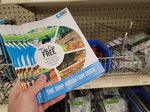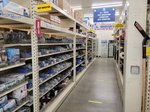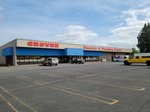


With more time than ever on their hands, Pacific Northwest do-it-yourselfers have completed many projects on their personal to-do lists. While some projects can take weeks or months, installing a drip irrigation system for a person’s home garden is “quick and easy.”
Jerry O’Donnell, the manager at Grover Electric and Plumbing Supply in Vancouver, said installing a drip irrigation system for vegetables, flowers and more can typically be done in under an hour for a simple job.
A drip irrigation system is a watering system that applies a small amount of water to a specific area through “drips.” The system slowly delivers a certain amount of water to the root zones of plants, keeping them at a specific moisture level.
“(Drip systems) are a great, inexpensive way to put water on specific plants and areas that need water,” O’Donnell said, mentioning that overwatering or spraying water all over can create weeds.
O’Donnell explained each drip irrigation system differs depending on the plants the home gardener is looking to water and the soil the plants are in. If the plant is in hard and compacted soil, O’Donnell suggests using a system which will apply less water per hour so it doesn’t “puddle” at the top. If the soil is soft, more water will be required as some evaporates throughout the day.
Along with being highly customizable, do-it-yourself irrigation systems can save a homeowner water by only applying the exact amount of water a plant needs to survive. According to a drip irrigation installation booklet provided by Grover Electric and Plumbing Supply, drip irrigation uses 50 to 70 percent less water than a conventional sprinkler. O’Donnell explained local residents pay for their water on a gallons-per-hour basis, so even if a person runs their drip system for an entire hour, they’ll only be using the designated amount of water and no extra.
At Grover Electric and Plumbing Supply, homeowners can find a vast array of drip system components to fit their needs. O’Donnell said the store carries hoses that range from half-a-gallon an hour to four gallons an hour.
O’Donnell has installed a few drip irrigation systems in garden beds himself and said the easiest way to do so is to run a “main line” around the outer perimeter of the box and smaller lines around the stalks of the plants. He said installing the system yourself is “easy” and water lines can be a max of 200 feet long before needing a second water source. Along with being affordable and simple, O’Donnell said drip irrigation systems are flexible and feeder lines can be changed year to year as gardens change.
“Drip irrigation is very easy to run,” he said.
The booklet at Grover Electric and Plumbing Supply is provided free of charge and tells customers exactly what parts they need to buy for a particular system through color-coded images and descriptions.
More information about Grover Electric and Plumbing Supply can be found online at groverelectric.com